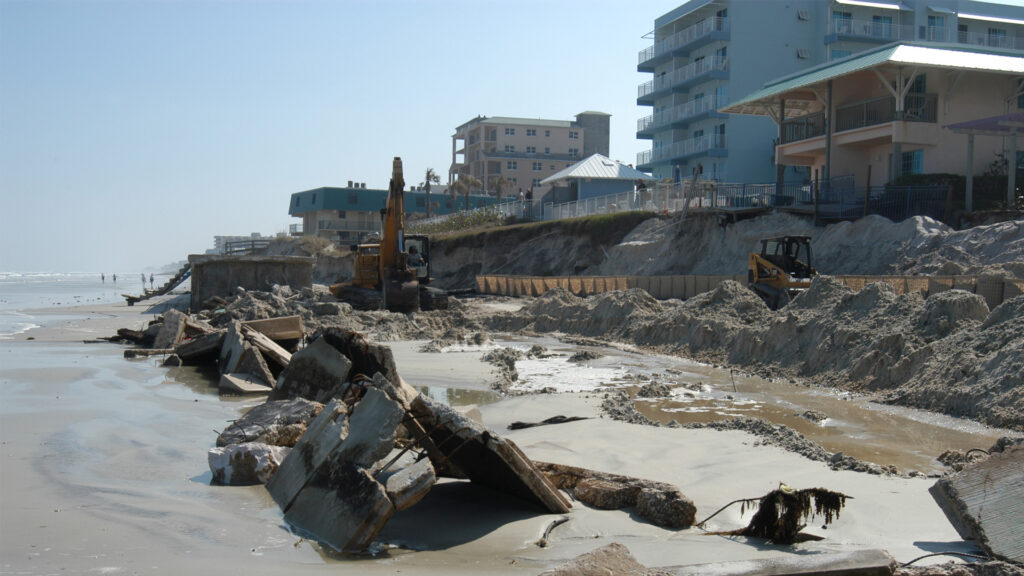By Emma Haydocy, Surfrider Foundation
The 2023 Atlantic hurricane season is off to an aggressive start, with three named storms in the month of June for the first time in the history of recorded hurricanes.
With this strong kickoff, many Floridians understandably are feeling a sense of unease following the devastating hurricane season of 2022, compounded by the lingering effects of Hurricanes Ian and Nicole in nearly every corner of the Sunshine State. Still, we once again are vulnerable to the impacts of storms supercharged by climate change.

While recovery continues, however, the Hurricane Restoration Reimbursement Grant Program is one of the most egregious programs to emerge in the aftermath of the 2022 hurricane season. This $50 million program, enacted under Senate Bill 4A during the Florida Legislature’s 2022 Special Session, provides $150,000 per eligible private beachfront property owner for hurricane restoration projects. These include sand placement, and temporary or permanent coastal armoring.
While the program was slated to end June 30, 2023, language included in the state budget’s implementation bill and signed into law by Gov. Ron DeSantis extends the program (and the $50 million appropriation) to June 30, 2024.
Florida is using tens of millions of public dollars to fund the construction of seawalls on — and to protect — private property. It’s a legislative measure that could upend the primary drivers of our state’s economic engine: beaches and tourism.
Florida’s beaches help attract more than 137 million visitors and yield more than $100 billion for our state every year. The value of Florida’s beaches is further evidenced by the more than $1.9 billion that the state has expended on beach nourishment in its history, currently averaging $30 million-$50 million annually. It is unconscionable that Florida is funding a program that will destroy our beaches, erode the foundation of our economy and work against costly beach nourishment projects.
To be clear: Seawalls do not work. Not anywhere, and especially not in Florida. Instead of preventing further erosion, they have been shown to accelerate beach loss directly in front of the structure, as well as on the adjacent properties that do not have armoring. In essence, Florida taxpayers have been on the hook for coastal armoring activities that will degrade, and in some cases destroy, our state’s treasured sandy beaches.
Not only does this program set a chilling precedent for coastal management, but it is also likely unconstitutional under Florida law, which prohibits the use of public funds without a public purpose. There is no purpose that serves the public less than granting funds to affluent property owners for activities that will irrevocably harm the state’s beaches.

The Hurricane Restoration Reimbursement Grant Program is a marked regression for a state that increasingly is vulnerable to flooding and impacts from climate-fueled weather events and hurricanes.
While Florida has made significant investments in coastal resiliency and preparedness for sea level rise in recent years, this program will subject Florida’s sandy beaches and coastlines to accelerated erosion and assured degradation.
Instead of incentivizing and funding seawalls for private property owners, the state should instead lean into its recently passed resiliency policy that harnesses the state’s myriad nature-based solutions proven to make our beaches more resilient to the impacts of hurricanes and climate change. The future of Florida’s coastlines and communities depend on it.
Emma Haydocy is Florida policy manager for the Surfrider Foundation. This opinion piece was originally published by the Miami Herald, which is a media partner of The Invading Sea.
If you are interested in submitting an opinion piece to The Invading Sea, email Editor Nathan Crabbe at ncrabbe@fau.edu. Sign up for The Invading Sea newsletter by visiting here.



